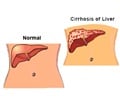The basic understanding of how the brain cells called Purkinje cells function can help in devising new therapies to improve motor skills.

In a recent study, scientists Mohini Sengupta and Vatsala Thirumalai from the National Centre for Biological Sciences (NCBS), Bengaluru, reveal that nerve cells found in the cerebellum send out electrical signals in either a constant hum or in sudden bursts.
"Which of the two tunes they choose depends on the voltage across their cell membranes and on input from a specific region of the brain," Thirumalai said.
"Since the Purkinje nerve cells are affected in conditions like alcoholism, autism and ataxias (lack of muscular coordination), the basic understanding of how they function can help in devising therapies to improve motor skills," Thirumalai said.
In addition, the findings may also aid in designing better robots.
Published recently in the journal eLife, the study carried out in zebra fish (a fresh water fish found in the Ganga and Brahmaputra) showed that Purkinje cells send out electrical signals in two different modes depending on the voltage at their cell surfaces.
Advertisement
In this state, cells were silent until signals from a different part of the brain arrived, at which time, they sent out a burst of impulses.
Advertisement
These states are reminiscent of a person attentively listening to directions and responding accordingly, or simply 'zoning out' and going their own way irrespective of instructions.
Source-IANS













